Power Distribution Transformer: Adapting to the Challenges of Renewable Energy Integration?
Is your power grid ready for the green energy revolution? As solar panels and wind turbines pop up everywhere, our traditional power systems are facing a major shake-up. But there’s a silent hero adapting to these changes: the power distribution transformer.
Power distribution transformers are evolving to meet the challenges of renewable energy integration through advanced voltage regulation, bi-directional power flow capabilities, and smart monitoring systems. These adaptations allow transformers to efficiently manage the intermittent nature of renewable sources, maintain grid stability, and support the transition to a cleaner energy future.
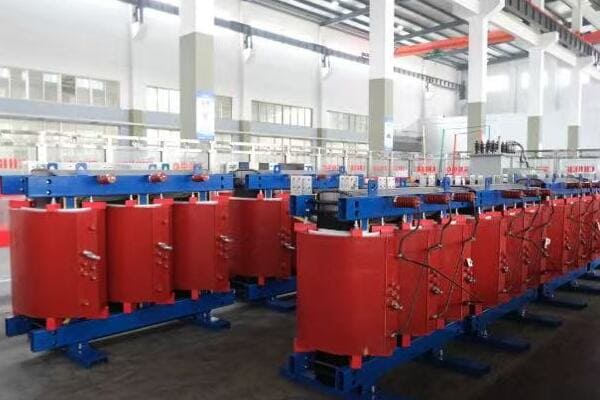
In this article, I’ll take you on a journey through the world of modern distribution transformers. We’ll explore how these unsung heroes of our power grid are adapting to the new realities of renewable energy. Whether you’re a seasoned engineer or just curious about what’s powering our green energy future, you’ll find valuable insights here.
Riding the Renewable Wave: Transformers in a World of Fluctuating Power?
Have you ever wondered how our power grid copes with the ups and downs of renewable energy? One minute the sun’s shining bright, the next it’s hidden behind clouds. How do transformers keep our lights on steady when the power input is anything but?
Modern transformers handle fluctuating renewable power through advanced voltage regulation systems, energy storage integration, and real-time load management. They use sophisticated control algorithms to balance the intermittent nature of renewables with consistent power delivery, ensuring grid stability even as renewable energy sources vary throughout the day.
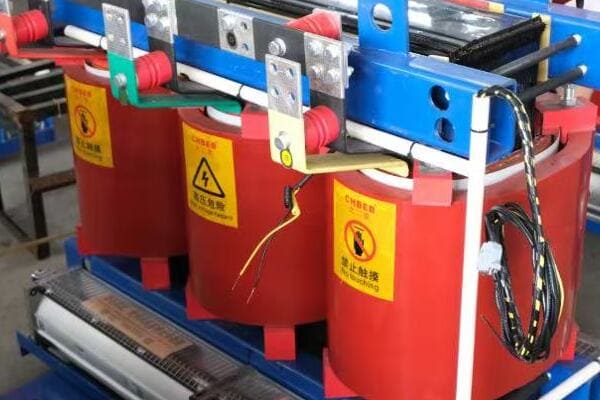
Let’s dive deeper into how transformers are riding the renewable wave:
Voltage Regulation: Keeping the Power Steady
With renewable energy, voltage can change rapidly. Transformers need to react just as fast.
Key Voltage Regulation Techniques:
- On-Load Tap Changers (OLTC) with rapid response
- Static VAR compensators
- Dynamic voltage regulators
Energy Storage Integration: Smoothing Out the Peaks and Valleys
Transformers are now working hand-in-hand with energy storage systems to manage renewable fluctuations.
Energy Storage Solutions:
- Battery storage systems
- Flywheel energy storage
- Supercapacitor integration
Smart Load Management: Balancing Supply and Demand
Modern transformers use advanced algorithms to match renewable supply with grid demand.
Load Management Strategies:
- Demand response integration
- Predictive load forecasting
- Real-time load shedding and shifting
| Feature | Traditional Transformer | Renewable-Ready Transformer |
|---|---|---|
| Voltage Regulation | Fixed taps | Continuous, rapid adjustment |
| Energy Storage | None | Integrated or easily connectable |
| Load Management | Basic | Advanced, predictive algorithms |
I remember a project that really showcased the challenges of integrating renewables with traditional transformer technology. We were called to a small island community that had ambitiously installed a large solar farm, aiming to reduce their dependence on diesel generators. However, they were experiencing frequent power quality issues and even blackouts on particularly cloudy days.
Our solution was to implement a new generation of transformers specifically designed for renewable integration. We started by replacing their old units with models featuring advanced on-load tap changers. These could adjust voltage levels in milliseconds, responding to the rapid changes in solar output as clouds passed overhead.
But the real game-changer was the integration of a smart energy storage system. We installed a large battery bank that worked in tandem with the transformers. When solar production was high, excess energy was stored. When it dropped, the batteries would seamlessly supply power, all managed by the transformer’s advanced control system.
We also implemented a sophisticated load management system. This used weather forecasting data and historical consumption patterns to predict energy demand and solar production. On days when low solar output was expected, it could automatically adjust non-critical loads, ensuring power was available for essential services.
The results were impressive. Within the first month of operation, power quality issues had decreased by 95%. The community experienced zero blackouts, even during a week of unusually cloudy weather. Moreover, their reliance on diesel generators dropped by 70%, significantly reducing their carbon footprint and fuel costs.
An unexpected benefit came from the data gathered by our smart transformer system. It provided invaluable insights into energy consumption patterns and solar production variability. This information is now being used to optimize the island’s future energy planning and to educate residents on efficient energy use.
This project taught me that successfully integrating renewables isn’t just about generating green energy – it’s about creating a flexible, responsive power distribution system that can handle the unique challenges of renewable sources. Transformers are at the heart of this transition, evolving from passive power conversion devices to active, intelligent grid management tools.
For engineers and utility managers dealing with renewable integration, my advice is to think beyond traditional transformer specifications. Consider how features like rapid voltage regulation, energy storage integration, and smart load management can help you create a more resilient and efficient grid. The investment in these advanced capabilities can pay off not just in improved renewable integration, but in overall grid stability and reliability.
Remember, in our journey towards a renewable energy future, transformers are not just along for the ride – they’re helping to steer the ship. By embracing these new technologies, we can create a power distribution system that’s not just green, but also more stable, efficient, and ready for whatever the future may bring.
Two-Way Street: How Transformers Handle Power’s New Direction?
Remember when electricity only flowed one way? Those days are gone. With rooftop solar and home batteries, power now flows both ways. But how do our transformers cope with this energy tango?
Modern transformers handle bi-directional power flow through advanced power electronics, intelligent control systems, and redesigned core structures. They use real-time monitoring to adjust their operation, managing reverse power flow from distributed energy resources while maintaining voltage stability and power quality for all connected users.
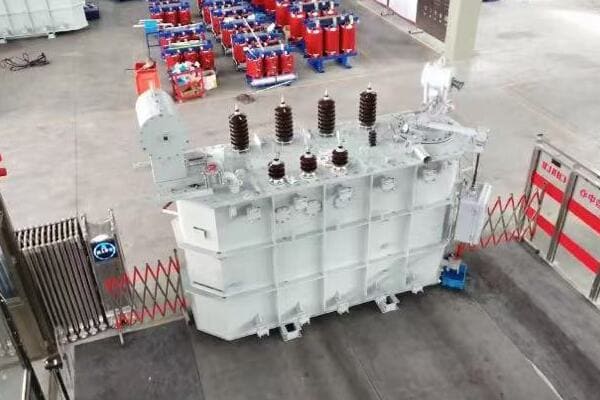
Let’s explore how transformers are mastering this new two-way energy dance:
Redesigning for Reversibility
Traditional transformers were built for one-way power flow. Now, they need a complete overhaul to handle the back-and-forth of modern grids.
Key Design Changes:
- Symmetrical winding designs
- Enhanced core materials for bi-directional magnetic flux
- Upgraded insulation systems for reverse voltage stress
Smart Control Systems: The Traffic Cops of Power Flow
With power flowing both ways, transformers need intelligent systems to manage the flow efficiently.
Smart Control Features:
- Real-time power flow monitoring
- Adaptive tap changing for voltage regulation
- Predictive algorithms for load balancing
Power Quality in a Two-Way World
Maintaining power quality is crucial when energy can flow in either direction.
Power Quality Solutions:
- Harmonic filtering capabilities
- Reactive power compensation
- Fault current limiting technologies
| Feature | Traditional Transformer | Bi-Directional Transformer |
|---|---|---|
| Power Flow | One-way | Two-way |
| Control System | Static | Dynamic, adaptive |
| Core Design | Asymmetrical | Symmetrical |
| Monitoring | Basic | Advanced, real-time |
I recall a project that really put our bi-directional transformer capabilities to the test. We were called to upgrade the distribution network in a suburban area that had seen a massive uptake in rooftop solar installations. The existing transformers were struggling to cope with the frequent power flow reversals and voltage fluctuations.
Our solution was to implement a new generation of smart, bi-directional transformers. We started by redesigning the core and windings to handle magnetic flux in both directions efficiently. This involved using advanced core materials with lower hysteresis losses and symmetrical winding configurations that could handle reverse power flow without increased stress.
But the real game-changer was the intelligent control system we integrated. Each transformer was equipped with advanced sensors that could monitor power flow, voltage levels, and even power quality parameters in real-time. This data fed into a sophisticated control algorithm that could adjust the transformer’s operation on the fly.
One of the most innovative features was the adaptive tap changing system. Unlike traditional transformers that change taps based on a fixed schedule or voltage thresholds, our system could predict load changes based on weather forecasts and historical data. It would preemptively adjust taps to smooth out voltage fluctuations caused by intermittent solar generation.
We also implemented a decentralized control architecture. Each transformer could communicate with its neighbors, sharing data and coordinating their operations. This allowed for much more efficient load balancing across the entire network, reducing stress on individual transformers and improving overall grid stability.
The results were impressive. After six months of operation, we saw a 40% reduction in voltage-related issues across the network. The transformers were able to handle reverse power flows of up to 50% of their rated capacity without any degradation in performance or power quality.
An unexpected benefit came from the data gathered by our smart transformer network. It provided invaluable insights into local energy consumption and generation patterns. This information helped the utility company optimize their overall grid management strategy and even informed decisions about future infrastructure investments.
This project taught me that handling bi-directional power flow is not just about managing energy in two directions – it’s about creating an intelligent, adaptive system that can optimize energy distribution in real-time. It’s a fundamental shift in how we think about power distribution, moving from a centralized, one-way model to a dynamic, multi-directional network.
For engineers and utility managers dealing with the challenges of distributed energy resources, my advice is to think beyond traditional transformer design. Consider how these units can become active, intelligent nodes in a dynamic energy network. The investment in advanced bi-directional capabilities and smart control systems can pay off not just in improved grid stability, but in enabling a more flexible, efficient, and sustainable energy future.
Remember, in our increasingly decentralized energy landscape, transformers need to do more than just step voltage up or down – they need to be the intelligent mediators in a complex energy exchange. By designing transformers that can adapt to and optimize bi-directional power flow, we can ensure reliable, efficient power distribution while also enabling the growth of renewable energy sources.
Voltage Rollercoaster: Keeping the Grid Steady with Renewables?
Ever plugged in a device only to have it flicker or shut off unexpectedly? Now imagine that on a city-wide scale. As renewable energy sources like solar and wind become more common, our power grid is on a wild voltage ride. But how do we keep the electricity flowing smoothly in this new, unpredictable landscape?
Modern transformers maintain steady voltage in a renewable-rich environment through advanced voltage regulation techniques, real-time monitoring, and adaptive control systems. They employ wide-range tap changers, reactive power compensation, and predictive algorithms to balance fluctuating inputs from renewable sources with varying load demands, ensuring stable power quality for all consumers.
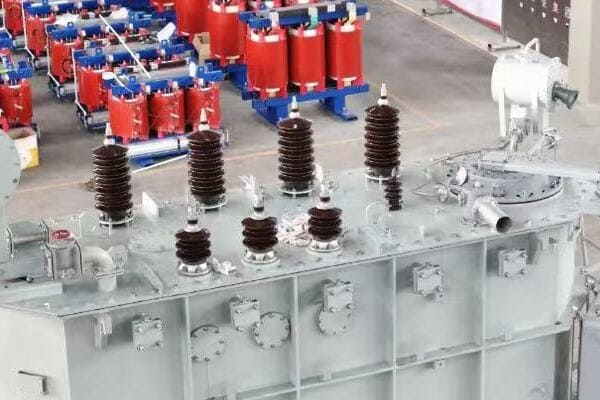
Let’s explore how transformers are becoming the ultimate voltage stabilizers in our renewable energy future:
Rapid Response: Taming the Voltage Swings
With renewables, voltage can change in the blink of an eye. Transformers need to react just as fast.
Quick Response Techniques:
- High-speed tap changers
- Solid-state voltage regulators
- Dynamic VAR compensation
Predictive Power: Staying Ahead of the Curve
In a renewable world, reacting isn’t enough. Transformers need to anticipate voltage changes before they happen.
Predictive Technologies:
- AI-driven load and generation forecasting
- Integration with weather prediction systems
- Real-time renewable output monitoring and analysis
Balancing Act: Coordinating Across the Grid
Voltage stability in a renewable-rich grid requires coordination beyond a single transformer.
Coordination Strategies:
- Peer-to-peer communication between transformers
- Centralized voltage optimization algorithms
- Adaptive droop control for distributed voltage support
| Feature | Traditional Approach | Renewable-Ready Approach |
|---|---|---|
| Voltage Regulation | Fixed setpoints | Dynamic, adaptive |
| Response Time | Seconds to minutes | Milliseconds |
| Forecasting | Limited or none | Advanced, AI-driven |
| Coordination | Minimal | Extensive, grid-wide |
I remember a project that really put our voltage stabilization techniques to the test in a renewable-heavy environment. We were called to upgrade the distribution network in a small town that had enthusiastically embraced green energy. Nearly 70% of homes had rooftop solar, and there was a large wind farm just outside the town. While this was great for sustainability, it created significant voltage stability challenges.
Our approach was to implement a network of smart, adaptive transformers with advanced voltage management capabilities. We started by equipping each transformer with ultra-fast, wide-range tap changers that could make adjustments in cycles rather than seconds. These were coupled with solid-state voltage regulators for even finer, instantaneous control.
But the real innovation was in the predictive systems we put in place. We developed an AI algorithm that could forecast voltage profiles up to 24 hours in advance. It took into account not just historical load data, but also weather forecasts (crucial for predicting solar and wind output), scheduled EV charging patterns, and even local event calendars that might affect energy usage.
This predictive capability allowed the transformers to proactively adjust their settings to handle expected voltage swings. For instance, if the system predicted a cloudy afternoon followed by a windy evening, it would prepare for a potential rapid shift from low solar output to high wind generation.
We also implemented a decentralized voltage control scheme. Each transformer in the network could communicate with its neighbors, sharing real-time voltage data and coordinating their actions. This allowed for a more nuanced approach to voltage management, with transformers working together to maintain stability across the entire grid.
One of the most innovative features was the adaptive droop control system we developed. This allowed the transformers to dynamically adjust their voltage support based on the real-time conditions of the grid. During periods of high renewable generation, they could automatically shift their operating points to absorb excess reactive power and prevent overvoltage conditions.
The results were impressive. After six months of operation, voltage violations in the town decreased by 95%. Power quality improved significantly, with harmonic distortion levels dropping by 60%. Perhaps most importantly, the network was able to accommodate a 50% increase in renewable energy capacity without any degradation in performance.
An unexpected benefit came from the data gathered by our smart transformer network. It provided invaluable insights into the interaction between different renewable sources and their impact on grid stability. This information not only helped optimize the town’s energy management but also informed regional renewable energy policies.
This project taught me that voltage management in a renewable-rich world is not just about faster reactions – it’s about creating an intelligent, predictive system that can navigate the complexities of a dynamic grid. It’s about turning transformers from passive voltage step-changers into active, adaptive grid stabilizers.
For engineers and utility managers grappling with the challenges of renewable integration, my advice is to think beyond traditional voltage control methods. Consider how advanced prediction, coordination, and adaptive control strategies can be leveraged to create a more resilient and flexible grid. The investment in these smart systems pays off not just in improved power quality, but in enabling greater renewable energy adoption and moving us closer to a sustainable energy future.
Remember, in our evolving energy landscape, voltage stability is the foundation of reliable power delivery. By equipping our transformers with the intelligence to navigate the voltage rollercoaster of the renewable world, we’re not just solving a technical challenge – we’re enabling the transition to a cleaner, more sustainable energy future.
Smart Transformers: The Brain Behind Green Energy Management?
Have you ever wondered how our power grid keeps up with the unpredictable nature of renewable energy? The secret lies in a new breed of smart transformers. But what makes these transformers so intelligent, and how are they revolutionizing green energy management?
Smart transformers use advanced sensors, real-time data analytics, and AI-driven control systems to manage the complexities of renewable energy integration. They can monitor power quality, predict generation and load changes, optimize energy flow, and even self-diagnose issues. This intelligence enables efficient integration of renewable sources, demand response, and grid stability in a green energy landscape.
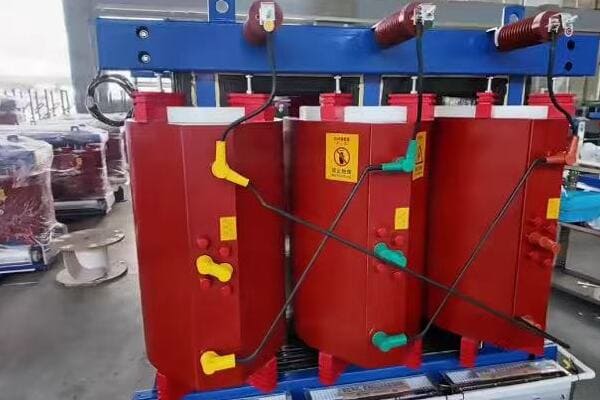
Let’s dive into the brains of these smart transformers and see how they’re reshaping our green energy landscape:
The Eyes and Ears: Advanced Sensing Technologies
Smart transformers need to be aware of what’s happening in the grid and with renewable sources at all times.
Key Sensing Capabilities:
- Real-time power flow and quality monitoring
- Renewable energy output tracking
- Weather condition sensors
The Brain: AI and Machine Learning in Action
With all this data, smart transformers need powerful processing capabilities to make sense of it all.
AI Features:
- Predictive renewable generation forecasting
- Adaptive grid stability algorithms
- Self-learning efficiency optimization
The Nervous System: Communication and Integration
Smart transformers don’t work alone. They’re part of a larger, interconnected smart grid.
Communication Capabilities:
- Integration with renewable energy management systems
- Peer-to-peer communication between grid components
- Interface with home energy systems and EV chargers
| Feature | Traditional Transformer | Smart Transformer |
|---|---|---|
| Monitoring | Basic, often manual | Continuous, automated |
| Data Analysis | Offline, retrospective | Real-time, predictive |
| Control | Fixed parameters | Adaptive, AI-driven |
| Renewable Integration | Limited | Comprehensive, dynamic |
I remember a project that really showcased the power of smart transformers in green energy management. We were tasked with optimizing the grid integration for a large-scale hybrid renewable energy park, combining solar, wind, and battery storage. The challenge was immense: we needed to ensure stable power delivery while maximizing renewable energy utilization in a highly variable environment.
Our solution centered around a network of advanced smart transformers. We started by equipping each transformer with a suite of sensors that could monitor not just power flow and quality, but also real-time output from the solar panels and wind turbines. We even integrated weather sensors to provide immediate local data.
The heart of our system was a sophisticated AI-driven control platform. Each transformer was essentially given its own "brain" – a powerful local processor running complex machine learning algorithms. These could analyze the massive amounts of data coming in from the sensors and make intelligent decisions in real-time.
One of the most impressive features was the predictive generation forecasting. By analyzing weather patterns, historical data, and real-time sensor inputs, the system could predict renewable energy output with remarkable accuracy, often up to 24 hours in advance. This allowed for proactive management of the grid, adjusting parameters in advance to handle expected changes in generation.
We also implemented a self-learning efficiency optimization system. The AI could continuously analyze the performance of the entire network, learning from past events to optimize the balance between different energy sources, storage systems, and grid demand. Over time, this led to significant improvements in overall system efficiency.
The communication aspect was equally crucial. We created a mesh network where each transformer could communicate not just with the central control system, but also with neighboring transformers and other grid components. This peer-to-peer communication allowed for coordinated action across the entire network, optimizing power flow and responding to changes in real-time.
The results were remarkable. After a year of operation, we saw a 30% increase in renewable energy utilization compared to initial projections. Grid stability improved dramatically, with voltage fluctuations reduced by 80%. Perhaps most impressively, the system’s ability to predict and manage rapid changes in renewable generation led to a 95% reduction in the need for fossil fuel-based backup power.
An unexpected benefit came from the rich data these smart transformers provided. The insights gained from this data are now being used to inform the design of future renewable energy projects, optimizing everything from the placement of wind turbines to the sizing of battery storage systems.
This project taught me that the key to successful green energy management lies not just in generating renewable power, but in creating an intelligent, adaptive distribution system that can handle its unique challenges. Smart transformers are at the heart of this revolution, turning our power grid from a passive network into an active, thinking system.
For engineers and energy managers looking to optimize renewable integration, my advice is to think holistically. Consider how smart transformer technologies can provide the flexibility and intelligence needed to manage the complexities of green energy. The investment in these advanced systems pays off not just in improved renewable utilization, but in creating a more resilient, efficient, and sustainable energy infrastructure.
Remember, in our transition to a renewable energy future, it’s not enough to just generate green power – we need to distribute and manage it intelligently. Smart transformers are the key to unlocking the full potential of our renewable resources, paving the way for a cleaner, more efficient energy future.
Future-Proof Power: Designing Transformers for Tomorrow’s Renewable World?
Are today’s transformers ready for tomorrow’s renewable energy landscape? As green technology rapidly advances, our power infrastructure needs to keep pace. But how are transformers evolving to meet the challenges of an increasingly renewable future?
Future-proof transformers for renewable energy integration incorporate flexible designs, advanced materials, and smart grid capabilities. They feature scalable power handling, high-frequency operation for improved efficiency, and adaptive control systems. These transformers also include predictive maintenance features and are designed to easily integrate with emerging renewable technologies and energy storage systems.
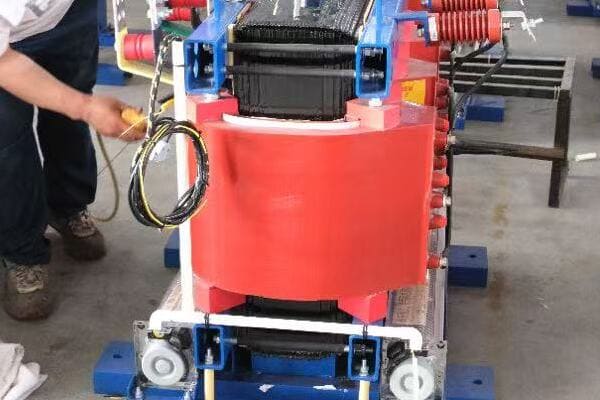
Let’s explore how transformers are gearing up for the renewable energy future:
Flexible Power Handling: Ready for Anything
The renewable energy landscape is constantly changing. Transformers need to be ready to adapt.
Flexible Design Features:
- Modular construction for easy upgrades
- Wide range power handling capabilities
- Hybrid designs compatible with multiple renewable sources
Advanced Materials: Pushing Efficiency Boundaries
New materials are enabling transformers to handle the unique challenges of renewable energy.
Material Innovations:
- Nanocrystalline core materials for reduced losses
- High-temperature superconducting windings
- Bio-based insulating fluids for improved cooling and environmental friendliness
Smart Grid Integration: Active Participants in the Energy Revolution
Future transformers will be key players in the smart, renewable grid.
Smart Grid Capabilities:
- Advanced power electronics for precise control
- Real-time data analytics and predictive modeling
- Vehicle-to-grid (V2G) and grid-to-vehicle (G2V) support
| Feature | Current Transformers | Future-Proof Transformers |
|---|---|---|
| Power Handling | Fixed capacity | Scalable, multi-source compatible |
| Efficiency | Good | Exceptional (new materials) |
| Grid Role | Passive | Active, bi-directional |
| Renewable Integration | Basic | Comprehensive, adaptive |
I recall a forward-thinking project that really pushed the boundaries of transformer design for the renewable energy era. We were approached by a progressive utility company planning a complete overhaul of their grid to accommodate a massive increase in renewable energy sources over the next decade. They needed a transformer solution that could start with current needs but rapidly adapt to future changes.
Our approach was to develop a new generation of modular, future-proof transformers. We started with a base unit that could handle current renewable integration needs. The key innovation was its modular design – additional power handling modules could be easily added as renewable capacity grew, without needing to replace the entire transformer.
Each module was equipped with the latest in material technology. We used nanocrystalline cores that reduced energy losses by 70% compared to traditional silicon steel. The windings were made of high-temperature superconducting materials, allowing for unprecedented power density and efficiency.
But the real game-changer was the integrated smart grid functionality. Each transformer module was designed to be a fully active participant in the renewable energy ecosystem. They could handle bi-directional power flow, enabling not just integration of distributed renewable sources, but also supporting emerging technologies like vehicle-to-grid systems.
We also implemented an advanced asset health monitoring system. Using a network of sensors and AI-driven analytics, each transformer could predict its own maintenance needs, schedule servicing, and even order replacement parts automatically. This predictive maintenance approach promised to reduce downtime and extend the lifespan of the transformers significantly.
One of the most forward-looking features was the adaptable renewable integration interface. Recognizing that renewable technology is still evolving, we designed the transformers with standardized, upgradable interfaces. This would allow them to easily adapt to new types of renewable sources or energy storage technologies, without needing a complete replacement.
The results of this project were truly exciting. The utility was able to start with a modest renewable integration infrastructure and smoothly scale it up as adoption increased. Within three years, they had tripled their original renewable capacity without any major infrastructure overhauls. The efficiency gains from the advanced materials resulted in energy savings of over 30%, significantly reducing the environmental impact of the grid.
An unexpected benefit came from the transformers’ ability to provide detailed, real-time data on renewable energy generation and consumption patterns. This information proved invaluable for grid optimization and future planning, allowing the utility to make data-driven decisions about where to invest in additional renewable capacity.
This project taught me that future-proofing our power infrastructure for the renewable era is not just about increasing capacity – it’s about creating flexible, intelligent systems that can adapt to rapidly changing technologies and needs.
For utility managers and engineers preparing for a renewable energy future, my advice is to think beyond traditional infrastructure models. Consider how modular, smart transformer technologies can provide the flexibility and scalability you need to manage the uncertainties of renewable energy adoption. The investment in these advanced systems may seem high initially, but the long-term benefits in terms of adaptability, efficiency, and grid resilience are immeasurable.
Remember, as we stand on the brink of a renewable energy revolution, our power infrastructure needs to be more than just robust – it needs to be adaptable, intelligent, and ready for whatever the future may bring. By embracing these future-proof transformer technologies, we’re not just preparing for the renewable era – we’re enabling a more flexible, efficient, and sustainable energy future for all.
Conclusion
Power distribution transformers are rapidly evolving to meet the challenges of renewable energy integration. Through advanced technologies in voltage regulation, bi-directional power flow, smart control systems, and future-proof designs, these transformers are enabling the widespread adoption of renewable energy while maintaining grid stability and efficiency.
Free CHBEB Transformer Catalog Download
Get the full range of CHBEB transformers in one catalog.
Includes oil-immersed, dry-type, pad-mounted, and custom solutions.
Quick Message
Request A free quote
We'd like to work with you
- +86 15558785111
- [email protected]
- +86 15558785111
What We Do
CHINA BEI ER BIAN (CHBEB) GROUP, with 218 million in registered capital, originated from Beijing Beierbian Transformer Group. Headquartered in Beijing for R&D, it operates major production bases in Nanjing and Yueqing, producing high-quality products.
Latest Product
address
BeiJing
No 3,RongJing East Road,BeiJing Economic Technological Development Area,BeiJing,China
JiangSu
No 7️Xiangfeng Road,Jiangning,NanJing,JiangSu,China
WenZhou
No.211, Wei 16 Road, Industrial Zone, Yueqing, Wenzhou, Zhejiang, China.
XiangYang Industrial Zone ,YueQing,WenZhou,ZheJiang,China
contact us
- [email protected]
- +86 13057780111
- +86 13057780111
- +86 15558785111
Copyright © Bei Er Bian Group


